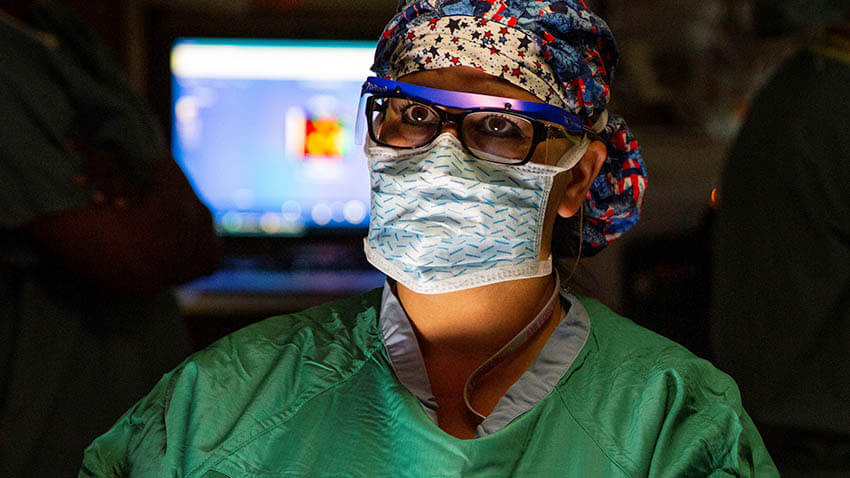The data is clear: for patients with early stage breast cancer, certain operations risk more harm than good — increasing the risk of medical complications, missed work and health care costs without increasing survival rates.
But efforts in recent years to reduce four procedures deemed low value for early stage breast cancer patients have met with only mixed success, according to a Michigan Medicine analysis of nearly 60 studies.
As part of the national Choosing Wisely campaign, the American College of Surgeons, the Society for Surgical Oncology, and the American Society for Breast Surgeons identified four low value procedures used in cases of early stage breast cancer that risk harm without improving overall survival.
The U-M study, which appears in JAMA Surgery, found that reduction efforts have only been successful in two out of the four procedures.
“Breast cancer is one of the most well-studied cancers, so there is really good data behind these recommendations,” says study senior author Lesley Dossett, M.D., a surgical oncologist and health services researcher at the U-M Institute for Healthcare Policy & Innovation. “We found that nationally, two of these procedures we’ve nearly stopped doing whereas two others we haven’t. This provides an opportunity to take a closer look at the factors that are contributing to the persistence of some procedures — at the level of patients, clinicians and health systems.”
The study was led by first author Ton Wang, M.D., a surgery resident and fellow at U-M’s Center for Health Care Outcomes & Policy; medical student Alison Baskin also contributed.
The two low-value procedures whose use has significantly decreased were:
-
Routine removal of all lymph nodes under the arm in patients undergoing a lumpectomy when cancer cells are found to be present in only one or two lymph nodes. The operation can lead to lymphedema, a blockage of the lymph system that causes painful swelling.
-
Routinely re-operating on patients who have undergone a lumpectomy and had a pathologist find cancer close to, but not at, the edge of the removed tissue. Not only does an additional operation to remove more tissue present its own risks, it can increase the likelihood the patient will choose to get a mastectomy — a much more significant and usually unnecessary operation, Dossett notes.
The two operations that were still frequently being done include:
-
Routinely performing a double mastectomy on patients who only have cancer in a single breast — also known as contralateral prophylactic mastectomy. Rates of the operation have actually been increasing, Dossett notes, especially among younger, white, more affluent women.
-
Routinely conducting sentinel lymph node biopsies in women 70 and over with hormone receptor-positive cancer. These women have an overall excellent prognosis, Dossett notes. And even if cancer cells are found in the lymph nodes, most of these women wouldn’t be good candidates for additional treatment with chemotherapy, Dossett adds, making the procedure of questionable value.
“Our findings emphasize the need to address both patient and clinician motivations for the continued use of these low value procedures,” Dossett says. “Not only do these procedures put individual patients at risk, they drive up costs for everyone. Unnecessary medical treatments are estimated to be about $200 billion in the U.S. annually.”
The research was supported by grants from the Agency for Healthcare Research and Quality (5 K08 HS026030-02) and the National Cancer Institute (T32 CA009672).
Paper Cited: “Deimplementation of the Choosing Wisely Recommendations for Low-Value Breast Cancer Surgery: A Systematic Review,” JAMA Surgery.DOI: 10.1001/jamasurg.2020.0322
Read more about Michigan Medicine research into reducing unnecessary breast cancer surgery:
-
When the Doctor Recommends Against the Surgery a Breast Cancer Patient Wants
-
Surgeons Have Major Influence on Breast Cancer Treatment Choices
-
Some Breast Cancer Patients Don’t Need Radiation. Why Are They Still Getting It?
Original post https://alertarticles.info
